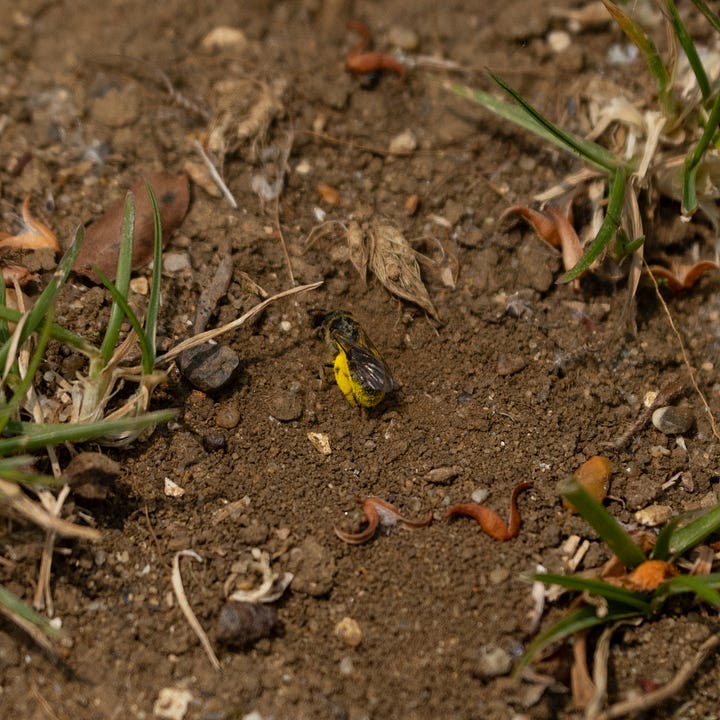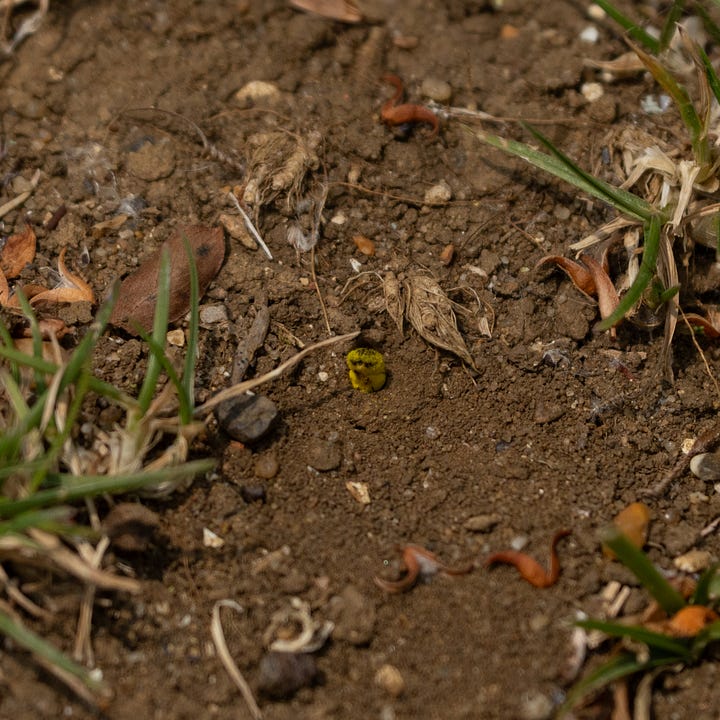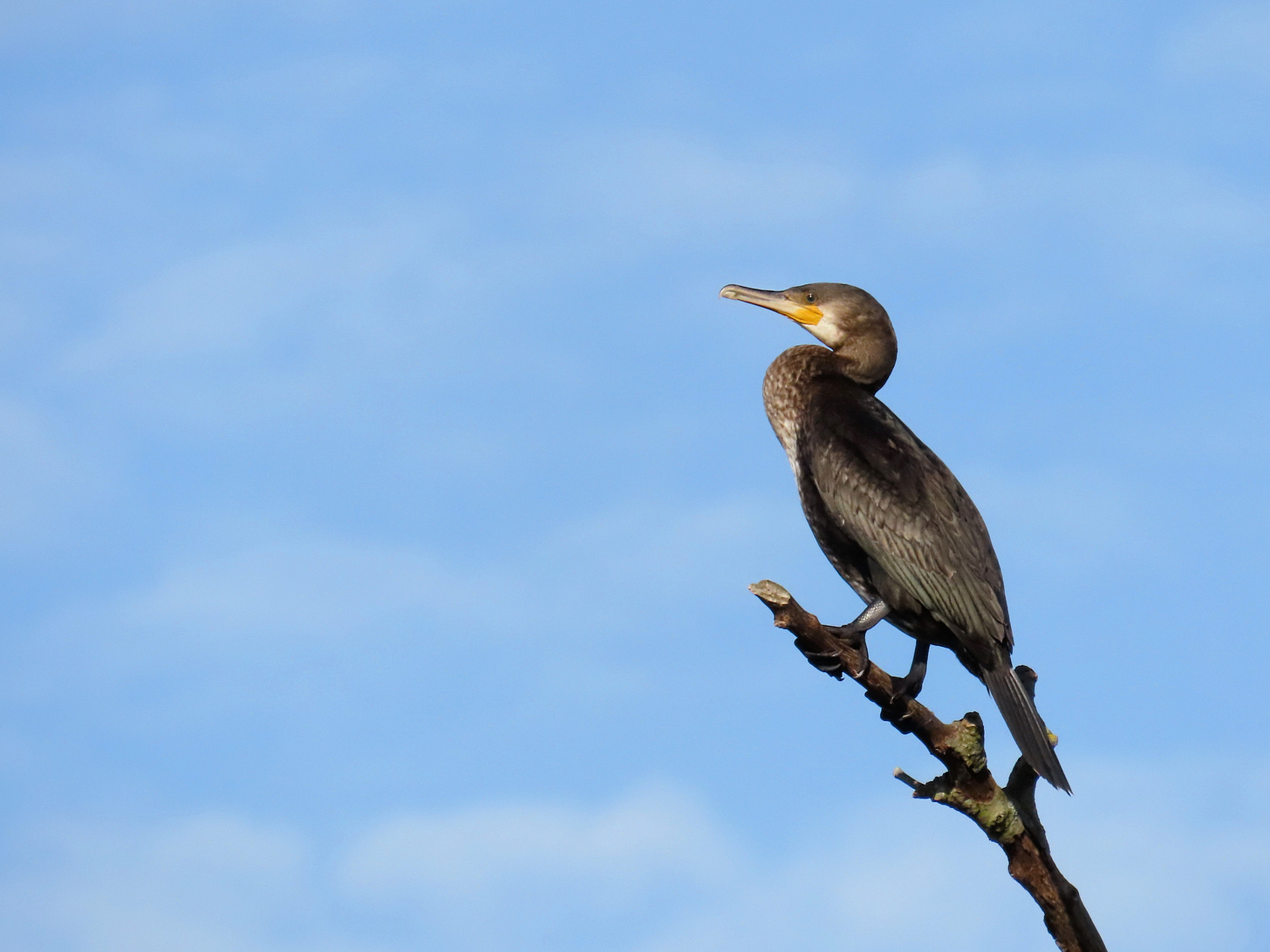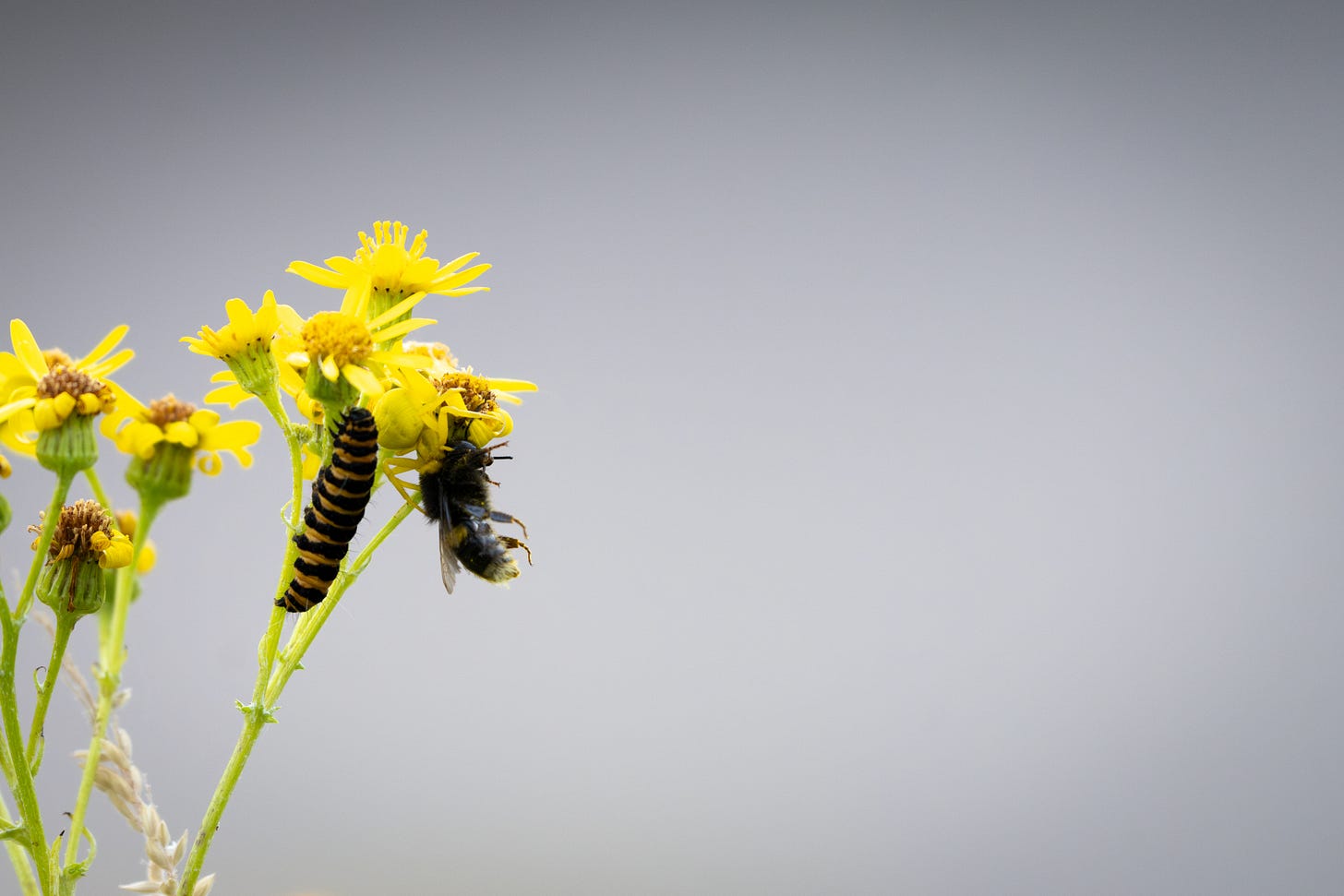Your weekly guided walk through the great outdoors.
Dragonflies, polleny bottoms and more fish fiends.
This post has been migrated over from my original Substack account. This is its new home, so make sure you’re following me here to stay connected!
There’s a certain type of weather that just feels like dragonfly weather. I notice it most at a couple of special places – such as Paxton Pits, a (free and fabulous) Wildlife Trust location where some of this week’s photos were taken.
It’s the type of weather that makes the gravel paths shimmer with heat haze. When the cool shade under the hedges appears as an inky, black hole. The haze combines with the movement from the beating of dragonfly wings to make it feel like the air is humming.
If you stand with a finger outstretched where dragonflies are busy alighting and patrolling, they may choose it as a perch. You can even, slowly, move your hand up in front of your face once they have landed, to gain a closer look.
Top tip: this is a great way to get kids to stand quietly for a couple of minutes. I know, because I had a couple of them copy me when I was doing it myself!
Or if you prefer your nature at more than arm’s length, you can often get great photos of these wonderful insects with just a mobile phone. My photos below are not taken with a mobile phone, but you can!
Dragonfly trailblazers
My pond isn’t large enough to attract more than the odd passing dragonfly. But if it was, this guy is likely to be the first to move in. He’s a broad-bodied chaser, the biggest of the UK dragonflies. The blue body tells us he’s male, while a female is greenish yellow.
These are the pioneers of the dragonfly world. They actively scout for new habitats over large distances. When they find one, they choose a suitable perch and often spend hours sitting there each day, in between patrols.
This brown dragonfly is a Norfolk Hawker, or Green-Eyed Hawker (as the rest of Europe calls it). It’s considered rare and previously only lived in relatively pristine fenland, although it has spread significantly over recent years.
Alongside the glut of dragonflies was an even larger number of damselflies. These sit with their wings folded neatly down their back, rather than spread like a butterfly.
Genuinely quite busy bees
This was one of many damselflies hanging out near a mound of earth that is home to some very special bees. These tiny Mining Bees dig little holes, in which they lay their eggs and deposit pollen and nectar. The grub turns into a pupa, which then turns into an adult – ready to emerge almost precisely one year after it hatched.


This means that Mining Bees are only active outside of the nest for around three weeks a year… so this is probably the best photo of one I’ll get until next year. Look at that little pollen-y bottom sticking out of the impossibly small burrow!
Another fishy Friday
I seem to be banging on about fish-eaters again this week. Fish are packed with fat and protein (calories!) so it’s no wonder such a wide range of animals choose to dine on them.
It’s hours of fun watching Common Terns wheel gracefully around, diving into the water with a dainty splash and emerging with a small flash of silver in their beak.
Less dainty, but still graceful, is the Little Egret. They hunt in the shallows, often disturbing the water with their yellow feet to send small fish and amphibians darting for cover. Except, some of them never make it that far.
I’ve written about Egrets in a previous week, if you’d like to know more about how they were the catalyst for the creation of the RSPB.
Less graceful still, the Cormorant. They are enormous – a metre long – and very clumsy on land. They fly with the panache of a goose (from the freezer section at the supermarket).
But underwater? They are transformed into a sleek, serpent-like hunter. They glide effortlessly through the water after fish that seem far too big for their narrow necks. They dive for several minutes, often appearing tens of metres away from where you last saw them.
Their feathers are interestingly more porous than normal bird feathers. This prevents them from trapping as much air (as it’s displaced by water), so they are less buoyant. It takes less energy for them to stay submerged, but also means they get completely waterlogged and have to dry off between periods in the water.
Over 40,000 pairs of cormorants spend winter here in the UK – an internationally significant population. Bird flu and persecution by fishers (the human type) do pose a threat, but the population of cormorants is currently stable and of ‘least concern’.
I quite enjoy seeing them pop up along my local river, but I suspect the local fishing club were happier with (responsible for?) the three dead ones I found one Springtime.

The final creature to look out for on your walks this week is the striking Cinnabar Moth. They start out as yellow and black caterpillars that love to eat ragwort, one of our toxic native wildflowers (often called 'weeds', but I disagree).
In doing so, the caterpillars become toxic themselves. Their bright colours warn predators not to eat them.
They're widespread across the UK, as ragwort is not fussy about where it lives. So if you're out and about this weekend, look out for the flutter of red and black wings in the long grass.

Just.... don't try to eat one.
You tell me
Let me know what you’ve seen on your wanders next week – perhaps I’ll go looking for it too! If not, I think I’ve got a few more fish-eating species up my sleeve.
P.S. I was made redundant in February, so I’m now freelancing. If you know a purpose-led organisation that needs an experienced content writer, I’d love to meet them. And if they can make use of my Zoology degree and wildlife knowledge? Even better. Thank you for thinking of me!
This newsletter is free! But if you’d like to show your appreciation, you can buy me a coffee.











